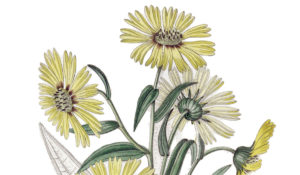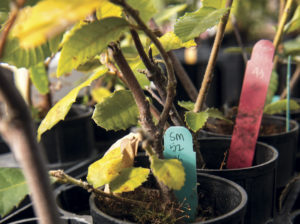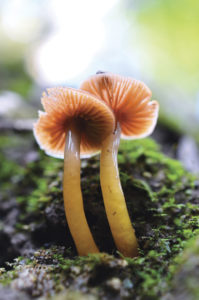The Bay laurel is one of our iconic trees, writer and herbalist Ali Budner writes in Bay Nature’s October-December 2016 issue. The California native grows widely, and provides important benefits to wildlife. But humans love it too. Here are some tips for foraging for and preparing roasted bay nuts this fall or winter.
(Important note: foraging isn’t legal everywhere. Please check before you gather!)
- Gather
Next time you’re out under a canopy of bay trees—with that telltale spicy smell in the air—scan the ground nearby for small roundish fruits, called drupes, that resemble tiny avocados. They’re botanically close relatives, in fact, and the thin layer of fruit can be eaten similarly if found in the small window of time between ripening and rotting. The outer skin might still be a pale greenish yellow or they might have aged to a wrinkled purple or brown, camouflaging against the earth. Gather up what you can handle. Don’t harvest any with visible mold.
- Shuck, wash, and dry
At home, shuck the remnants of the avocado-like fruit and skin, to reveal a shiny brown seed about the size of a hazelnut. Rinse the nuts thoroughly and spread them out on a tray. Let them dry for a couple of weeks in a warm and well-ventilated location. Then they’re ready for the next essential step: roasting. Or you can store them this way for up to a year before roasting.
- Roast
DO NOT SKIP THIS STEP. Roasting bay nuts rids them of the strong volatile oils that can irritate your throat and digestive system. There are different opinions out there on how high to heat the oven, how long to keep the nuts in, how often to check and stir them on the tray. One source suggests 350 degrees F for 60-90 minutes. Some recipes say 400 degrees F for 45 minutes. Whichever you choose, make sure to check the nuts every 30 minutes or so to turn them and check for any burning. They should be good when the insides have turned to a very dark brown, resembling a roasted coffee bean.
- Shell and eat
Once roasted, you can liberate the inner seeds from their hard shells with a nutcracker (or lightly with a hammer)—and snack on them as is, or proceed with whatever bay nut recipe strikes your fancy. Trying grinding the nuts and brewing as a coffee substitute or making chocolate-like desserts with it. Or try working from a recipe like the Bay Nut Chicken Mole from Edible East Bay, or the Bay Nut Ricotta Cake from Rooted Food.
Web resources:
Paleotechnics: Baynutting: Tips for Harvesting, Storing and Using California Bay Nuts
Rooted Food: Bay Nuts: The cacao-coffee bean of foraged finds
Edible East Bay: Roasted Bay Nuts
Feral Kevin: How to Eat Bay Nuts (Umbellularia californica)





